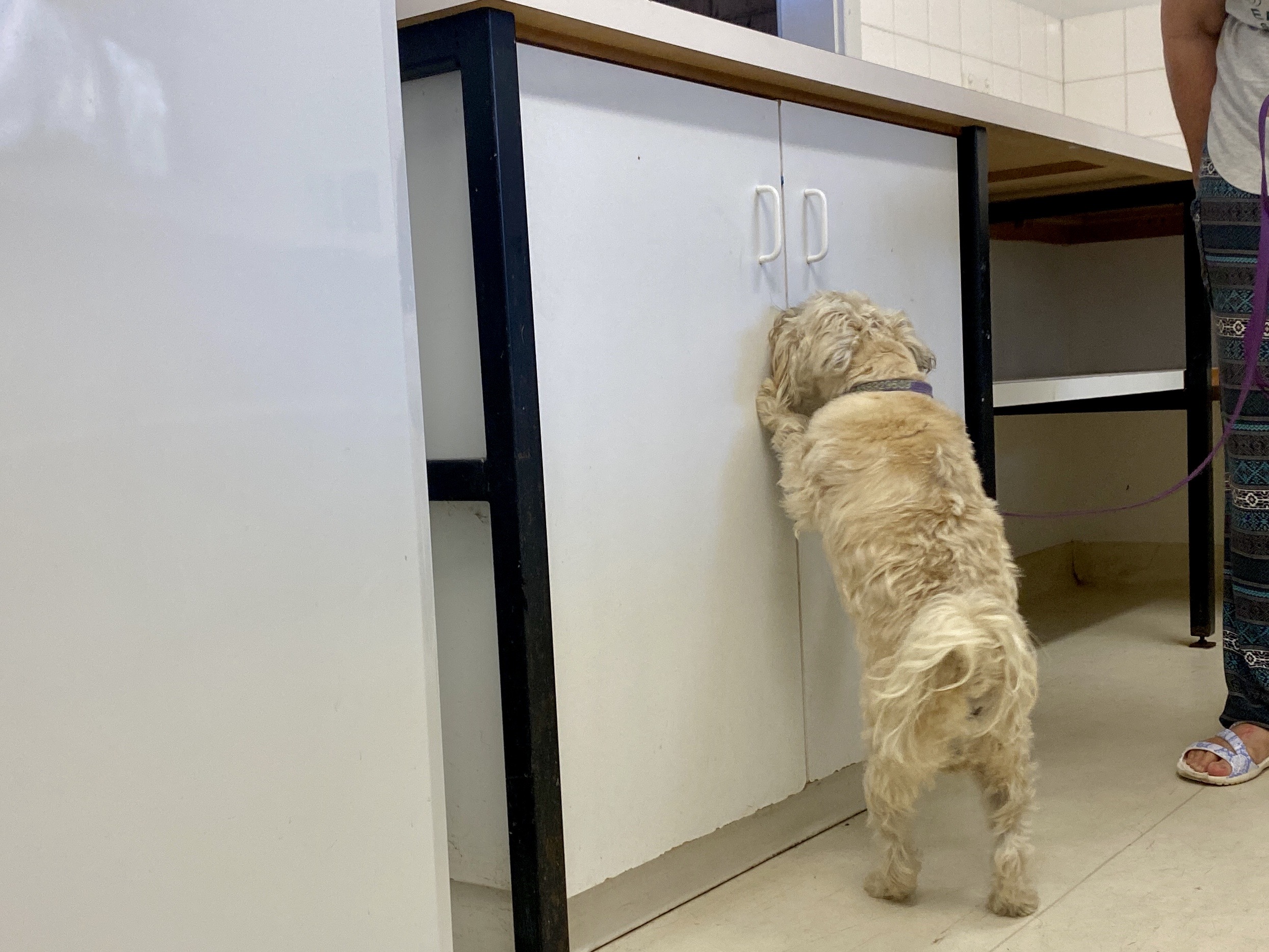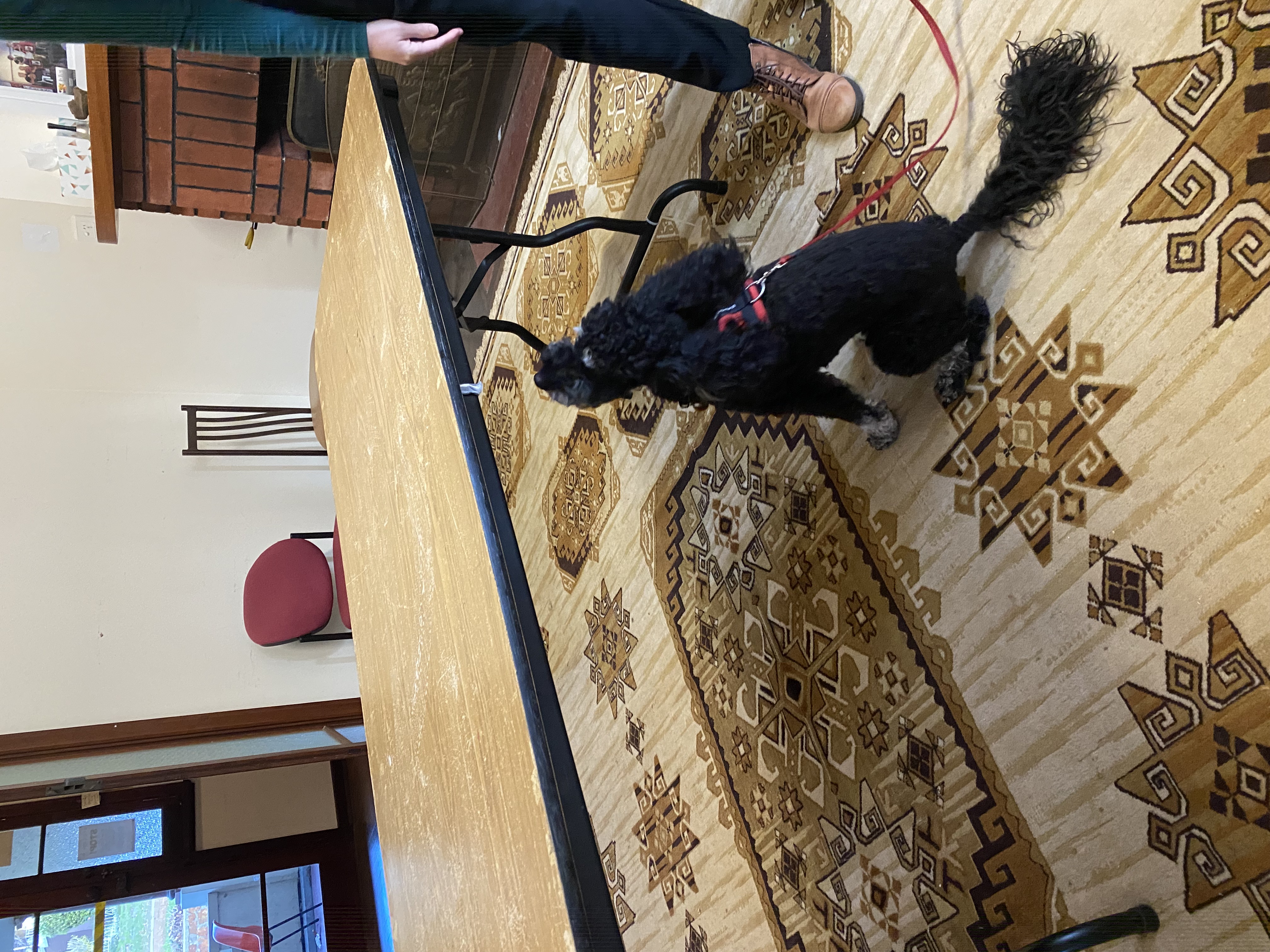

Indications – why all the controversy?
Bring up indications in a group of scent work trainers and be prepared for fireworks! Why the strong opinions? And what is all the fuss about?
Some trainers are of the opinion that there is only ONE indication that is right. But is there? And what if that one indication doesn't suit you or your dog? Should we be more open to different options?
I mean, an indication is simply a behaviour the dog performs to communicate to their handler they have found what they were searching for.
The sport of scentwork is devised from operational detector dogs – but is also a very different game.
Operational detector dogs are search for particular odours and the indication is very much tied to the particular role the dogs are performing.
Whilst it may be appropriate for a dog searching for truffles to paw the ground to indicate the presence of truffles – it is SO not appropriate for an explosives dog to perform that same behaviour! A body freeze or even a few steps backwards, a body freeze staring at the source of the odour would be much more appropriate. And so on.
Different roles also require different pinpointing accuracies (ie some need to say “EXACTLY HERE in this tiny millimetre of a spot” – others can be “THIS BAG” or “THIS TREE”).
So different job roles tend to have different indications. And also remember, that operational dogs are specifically chosen and trained to be highly efficient at finding and indicating in a particular way – and many need to follow a “recipe” so they may be handled by a range of handlers. Most are bred for their role and undergo considerabel training – yet many still don’t make the grade.
In my previous occupation, I assessed hundreds of dogs seeking employment as detection dogs – the success rate at initial interview was very low – I had a very specific attributes I was looking for. This is even before training commences. Thankfully, this is not the case of recreational scentwork – anyone and any dog can play the game.
As such, rather than trying to follow a recipe or use only a particular method or indication – surely us trainers can expand our skillset and work out which method and indication works best for the individual dog and human in front of us?
Rather than follow a recipe, let us learn more about our ingredients – so we can make the game of scentwork fun and achievable for all.
After all, the ANKC scentwork rules do not state you must have this or that indication. The dogs need to show a change of behaviour which makes it clear to the Judge that the dog has found the hide. This could be subtle, such as movement of the ears, or overt such as sitting or gently pawing at the location. As a foundation ANKC judge I have seen many different types of indications, some are very subtle indeed. The important factor is that the handler can read their dog.
I like to look at WA’s two dogs that recently passed the first Ultimate Level Search. Very different teams – they learnt with different methods and one dog has a nose hold indication and the other a sit. Yet both are truly champion teams in this sport. Would the same “recipe” have had the same result for these teams? What is common with both teams is that they both work as a TEAM. Their handlers read their dogs well, support them and try to ensure the game is fun. They are constantly looking at improving their handling and their dog’s skills. And I have never heard either blame their dog for any “non-success”. As a scentwork community we should celebrate the differences here – and also the similarities!
I was working with a client who has multiple dogs on the weekend and we were chatting about the pros and cons of different indications for very high or inaccessible hides – her dog with a sit and stare had no issue with those hides. However, other dogs who had a nose hold and had been taught to hold their nose ON the odour source, found such hides more difficult.
So, which indication is best for YOU and YOUR DOG?
There are many types of indications and all have their pros and cons. It is important to look at those and consider what works best for you and your dog.
So, let us look at the common indications used in scentwork trials.
SIT:
PROS–easy to teach, most dogs have in their repertoire. Easy for handlers to observe. For those high or inaccessible hides – a sit is still achievable.
CONS – not always comfortable for all dogs, if target hidden can be hard to pinpoint source without adding a second behaviour (ie a “show”)
NOSE HOLD:
PROS – for accessible hides – this pinpoints the exact spot very clearly.
CONS – when a dog has been taught their nose MUST be on the hide – then is introduced to inaccessible hides – they can become frustrated as they cannot get their noses ON the hide. For dogs with sensitive noses, holding their nose on odour can be aversive (think of us putting our nose on a perfume bottle). If it is a strong hide they may not put their nose directly on source. Handlers can miss the indication if it is quick – it isn’t as easy to read.
FREEZE and STARE
PROS – very comfortable for most dogs
CONS – can be difficult for handlers to pinpoint hide. Will require more advanced handling skills.
DOWN:
PROS – a very comfortable position for most dogs (except the really big ones, then a down can be a very slow process!)
CONS – can be hard to pinpoint source. Difficult for high hides particularly
PAW:
PROS – I think most dogs would vote for paw or dig as an indication – it is fun, dogs enjoy it and it comes quite naturally to many. If you have a small, delicate dog – this can be an acceptable indication.
CONS - an enthusiastic paw can damage containers and hides – so not recommended for those interested in scentwork trials – especially if they have a less delicate and less petite dog!
I have trained and handled many dogs in my professional career. Initially, I needed to follow a “recipe” – all dogs needed to do the same indication behaviour. I was mindful that not all enjoyed that allocated indication behaviour. For example, one of my dogs was trained to sit. Upon his retirement with spinal issues, I changed his indication to a chin rest (I don’t call it a nose hold as he found holding his sensitive nose on the item aversive so it was more his chin on the item). I have worked with many dogs that find the nose on odour aversive – another reason I do like to start with lower odour rather than high – but that is a blog for another day!
However, I now prefer to see what fits in with the dog in front of me. What do they prefer to do? What are they looking for? What is the aim of my training? Is it just for fun? Or is there important implications? Does the dog have any physical limitations? What was the breed or breed mix bred for?
Here at The Doggy Lady, we also look at the human half. Because there are two members of a successful scentwork team. For us, playing scentwork is about having fun with our dogs, building a relationship and learning more together. So what do we consider?
What does the human want to achieve?
What foundation training have they done?
Do they have good timing and training mechanics (hey, we are not all professional dog trainers or sports competitors and that is just fine!)
Do they have naturally good observational skills?
How much time do they want to put into training an indication?
Then we put all those elements together and work out what will work best for that team. For most of our new clients – a sit indication is the easiest way to get playing straight away. However, we are also mindful of those dogs who may struggle with that or not find it enjoyable – for those we will change to something else. Or those clients that have come through training with one dog with a sit indication, we may change to a nose hold for the next dog. Which works best for the team?
There really are pros and cons of each indication behaviour. I do not personally have a “favourite” indication. And I strongly encourage people to think about what suits them, their dog, and their purpose – rather than following a recipe or a fashion in the sport.
What I do recommend is learning to read your dog, get to know their nuances. This will set you up for success so much more!
Copyright © 2025 The Doggy Lady Perth

